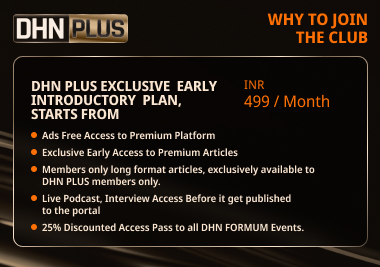Illumina, Ovation.io Develop Largest Clinical Multiomic Dataset to Advance GLP-1 Therapy Research

The Illumina-Ovation collaboration is designed to support the pharmaceutical industry by providing multiomic insights—integrating genomic, proteomic, and phenotypic data.
In a significant step toward accelerating precision medicine in metabolic diseases, Illumina, Inc. and Ovation.io, Inc. have announced the development of the largest commercially available clinical multiomic dataset of patients treated with GLP-1 receptor agonists.
The dataset, derived from 25,000 individuals, aims to drive advancements in drug discovery, indication expansion, and understanding of nonresponse to these increasingly common therapies.
Addressing GLP-1 Therapy Gaps Through Genomics
GLP-1 receptor agonists, widely prescribed for Type 2 diabetes and obesity, are currently used by one in eight adults in the United States, according to a 2024 poll by the Kaiser Family Foundation.
Despite their growing use, up to 40% of individuals with Type 2 diabetes fail to respond effectively to these medications, highlighting the urgent need for research into response variability and underlying molecular mechanisms.
The Illumina-Ovation collaboration is designed to support the pharmaceutical industry by providing multiomic insights—integrating genomic, proteomic, and phenotypic data—that could unlock new drug targets, identify biomarkers, and reveal novel indications for GLP-1 therapies.
"This collaboration and its novel clinical dataset will be crucial to advancing the next wave of these potential life-changing therapies," said Todd Christian, Senior Vice President of Services, Arrays, and Genomic Access at Illumina.
"The power of whole-genome and multiomic insights to impact all diseases is coming into focus, and metabolic disease is a prime example."
Multiomics at Unprecedented Scale
The initiative, structured as a multiyear agreement, will sequence 25,000 whole genomes and generate proteomic profiles for 5,000 patient samples using Illumina's Protein Prep (IPP) assay, which can detect 9,500 human proteins per sample.
The proteomic data will include longitudinal samples—collected before and after treatment exposure—offering insights into how protein expression evolves in response to GLP-1 therapy.
Importantly, the dataset will also enable the discovery of protein quantitative trait loci (pQTL)—genetic variations linked to protein expression levels—providing a critical link between genomics, proteomics, and disease phenotypes.
The data will undergo secondary analysis using Illumina's DRAGEN platform and tertiary analysis and visualization through the newly released Illumina Connected Multiomics suite.
All data will be stored securely in Illumina Connected Analytics to support future large-scale investigations.
A Scalable Resource for the Pharmaceutical Ecosystem
Ovation is contributing to the collaboration by providing samples from its biobank of over 1.7 million de-identified, consented, and tokenized samples, each linked to rich longitudinal clinical and phenotypic data.
The companies say this approach offers an unprecedented level of biological depth to understand response heterogeneity in patients using GLP-1 therapies.
"We're proud to collaborate with Illumina to develop one of the world's largest WGS omics datasets," said Marty Miller, Chief Revenue Officer at Ovation.
"With the inclusion of proteomics, we aim to equip the pharmaceutical industry with the insights needed to better understand the varying effectiveness and side effects of GLP-1 receptor agonists across individual patients."
Future Directions & Expansion
This new initiative builds on a previous agreement announced by Illumina and Ovation in early 2024. That collaboration focused on generating pilot datasets in liver disease, chronic kidney disease, and GLP-1-treated populations.
With the current expansion, the companies plan to scale the GLP-1 dataset and develop additional multiomic datasets targeting other complex diseases in the future.
Illumina emphasized that the initiative underscores its commitment to unlocking the power of the genome to improve human health, particularly through innovations in DNA sequencing, proteomics, and data analysis platforms that empower researchers and pharmaceutical developers alike.
Stay tuned for more such updates on Digital Health News.
Stay tuned for more such updates on Digital Health News





























